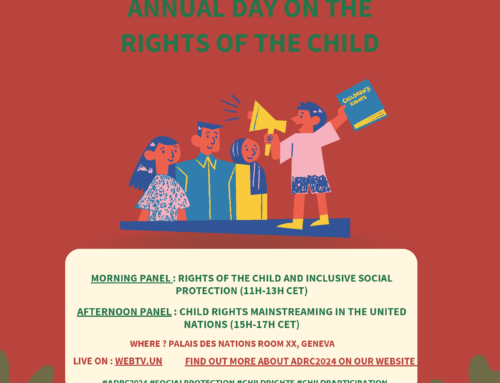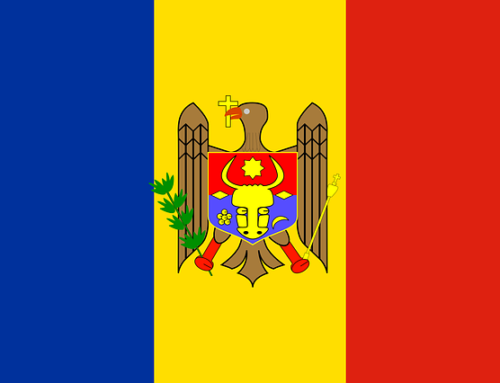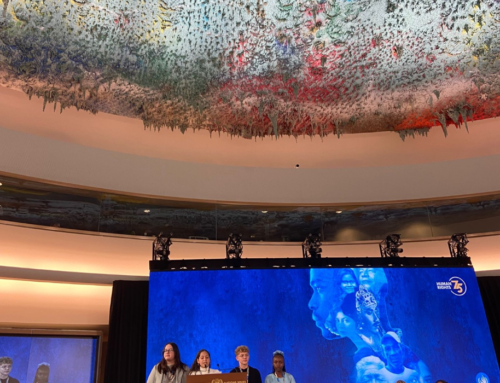At the opening of the 83rd session of the UN Committee on the Rights of the Child, Child Rights Connect this morning recalled the continued relevance of the Convention and the work of the Committee, and the partnership of the Committee with the secretariat and members of Child Rights Connect.
Distinguished members of the Committee, representatives of UN agencies, ladies and gentlemen,
Thank you for the opportunity to address the Committee on behalf of the Child Rights Connect secretariat and its members.
During the Committee’s last session, we together celebrated 30 years since adoption of the Convention on the Rights of the Child. A three-day conference followed this, culminating in an official ceremony on 20 November. Amongst many personal and powerful interventions from children, we heard from Kurt (our child advisor from Argentina), who spoke in the persona of the Convention, happy to celebrate another birthday, but wanting that such a celebration was no longer necessary; instead wishing that the rights of all children everywhere were enjoyed to the fullest so that the Convention and the work of this Committee was no longer necessary.
Yet we know that progress made in the recognition and protection of children’s rights since the Convention’s adoption has been uneven. Many of the world’s children still live in situations in which their rights are violated and in which they may have little hope to grow, learn, play, develop and flourish with dignity. In all regions of the world, national laws, policies and practices remain out of step with the Convention and its Optional Protocols. Although the protection and fulfillment of children’s rights is not a favour nor a matter of charity, many continue to view children as objects of protection rather than as full rights-holders. Children and their representatives continue to face barriers in accessing justice for the violation of children’s rights. And those seeking to promote and protect the rights of children, including children themselves, face a shrinking space in which to safely and effectively do so or attacks from private anti-rights actors.
The Convention, and the work of this Committee, therefore continues to be necessary and your partnership with us and our members remains vital.
I would also recall the closing remarks of our President, and former member of the Committee, Mária Herczog, at the closing of the 30th anniversary conference. She reminded us that we should all maintain our focus on the particular interests and actors we represent; but that we must not allow this to overshadow others. It is right, she said, that we mainstream child rights within all spheres; within the Sustainable Development Goals; within the youth agenda; within the aims of achieving the well-being of families, communities, nations and the world at large. But she called on us to distinguish between mainstreaming and merging. We must do more than use the SDGs, the youth agenda and other concepts as proxies for child rights. We must address child rights as child rights and treat them as everyone’s priority, putting them at the highest level of our common agenda.
Mindful of these challenges and calls for action, Child Rights Connect has an ambitious work plan for 2020. With an invigorated secretariat team, we will continue to engage with and support the Committee in its work; and we will persist in pushing for synergies between the Convention and what the Committee does with the work and action of other UN mechanisms.
I would wish to highlight two areas in which we will pay particular attention to during this year.
- First, in the area of child participation and children human rights defenders. In this context, for example: we are in the midst of establishing a permanent Children’s Advisory Team to inform and engage with the work we do; and we have launched a new project to develop toolkit for children human rights defenders, including through guidelines on the interaction between the Convention and the Declaration on Human Rights Defenders.
- Second, we aim to expand our work around access to justice for child victims of human rights violations. In the context of the Optional Protocol on Individual Communications, for example, we will be building on our OPIC website launched last year through capacity building on the strategic use of OPIC and the development of a Legal Commentary to the Protocol.
These are just indications of some of our intended work and I look forward, in the coming days, to discussing our work with the Committee in greater detail. Child Rights Connect and its members are grateful for your support for that work, including the direct engagement of many of you in some of our planned activities.
I thank you.
Alex Conte
Executive Director
child rights connect










Leave A Comment